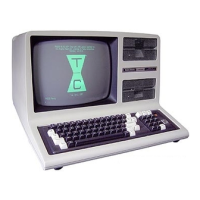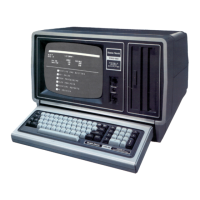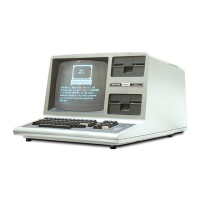Your screen should display:
WILLIAM
SHAKESPEARE
WROTE
THE
MERCHANT
OF
l,'EN I CE
BASIC replaced line
15
in
the original program with the most recent
line 15.
NOTE: BASIC "reads" your program lines
in
numerical order. It
doesn't matter if you entered line
15
after line 20; it will still read and
execute
15
before "looking" at 20.
BASIC has a powerful set of commands which allow you to correct
mistakes without having
to
re-type the entire line. These commands
are discussed
in
Chapter
3,
the "Line Edit Mode."
Saving
the
Program
on
Disk
You
can save any of your BASIC programs
on
disk. To do this, you
assign it a "filespec".
For example, if you wanted to save the program we just wrote, you
could assign it the filespec "AUTHOR". Type the following command:
SAl)E
"AUTHOR"
(ENTER)
It takes a few seconds for the computer
to
find' a place
on
disk to
store our program. When this process is completed, it displays Ready.
The program is now saved
on
disk.
IMPORTANT NOTE: A filespec can have a maximum of eight
alphanumeric characters.
It
can also have
an
optional extension,
up
to
three characters long. A slash / must be included between the
filespec and the extension. The first character of both the filespec and
the extension must
be
a letter.
Example
SAVE
"AUTHOR/WIL"
(ENTER)
You may also add a drive number to your filespec by typing a
colon:
and the drive number.
Example
SAVE
"AUTHOR:
1"
(ENTER)
tells the computer to save "AUTHOR"
on
the disk
in
Drive
1.
Otherwise, the computer assumes you to save it
on
the first available
drive.
If
you do specify a disk drive, make sure you have a disk
in
that
drive.
2-11

